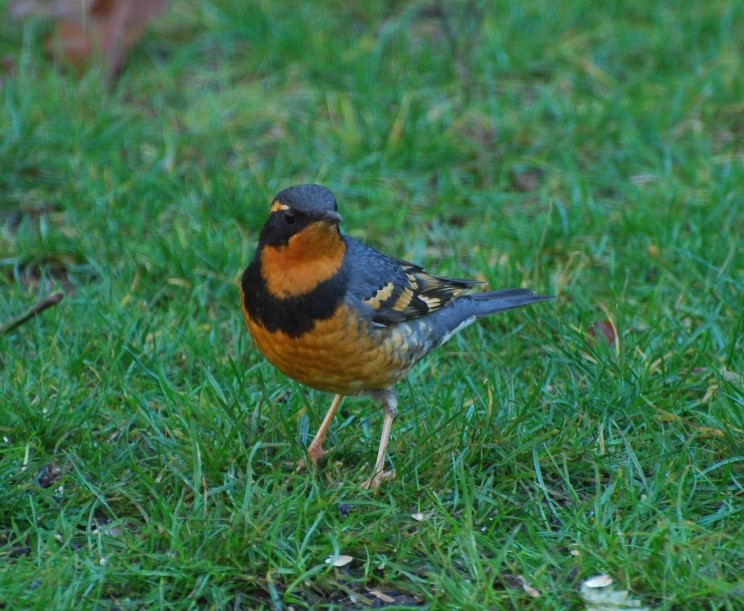
Feb 6, 2024 | Creation's Corner
As the first rays of the sun broke through the lingering darkness of night, morning did not find me on the beach today. Salmon season ended on September 30th. My freezer is adequately filled for the year and my early mornings now have other pursuits. This October morning, as often happens, my constant companion, Risa, joined me for a walk in the morning stillness. As is typical for most dogs, her sense of smell, hearing, and sight are attuned to the natural world far better than mine.
Then we heard it! Joining the other birds in the dawn chorus was the ethereal flute-like call of a Varied Thrush with each note of its song beginning on a different pitch (hence its name varied). It had been several months since I had enjoyed this unique voice in the early morning chorus. You see, Varied Thrush only spend the fall, winter, and early spring months at low elevation. They undergo a vertical migration into the high country where they breed during the summer. Now it was time for them to enjoy the solitude and warmer weather of the lowlands as the high country is blanketed in snow.
I encourage you to go to Google or your personal web browser and query the browser for the song of a Varied Thrush. It will brighten your day! While you are at it, you might want to listen to another beautiful song in the dawn chorus. Swainson’s Thrush is a cousin to the Varied Thrush and is a common summer resident in the western Washington lowlands. Whereas the Varied Thrush spends summer in the mountains, Swainson’s Thrush spends the winter in the tropics and joins us during the breeding season. It’s rising flute-like song is frequently heard at dusk in our western forests. You will enjoy adding it to your repertoire of bird songs. And be sure to say a prayer of thanks for the beauty of nature’s music.
If you are an early riser, during the fall, winter, and spring, you can catch a glimpse of Varied Thrush as they come out to feed along road edges in wooded areas. You might mistake them for another thrush, the American Robin of about the same size, but the markings of Varied Thrush are distinctive. Fortunately, during the winter you will not have to rise early for this enjoyment as they move to the road edges shortly after the first light of dawn. You might be able to sleep in until 6:30 or 7:00 a.m. and add this delightful opportunity to your morning prayer and devotion time.
Thanks for listening. Direct comments to [email protected]
— Joe Sheldon
If you would like to receive additional information on Creation care, notices of special events, Creation walks I lead, etc. please contact me at the above address and I will add you to my e-mail list. As always, your comments are welcome.
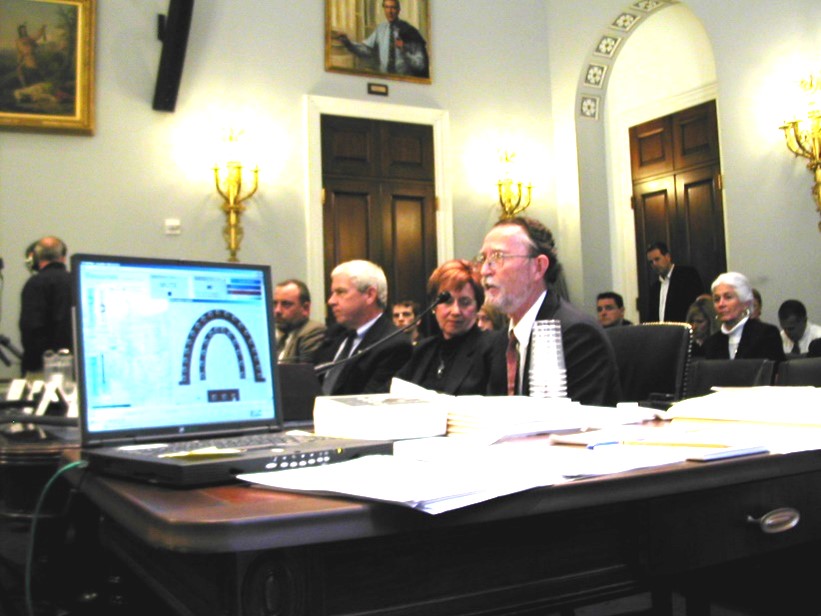
Jan 16, 2024 | Creation's Corner
Perhaps you recall as a child gazing on the scene of Noah’s Ark decorating the walls of your Sunday school classroom. Have you recently thought much about that Biblical event? Is it relevant today, or just a childhood story? What message does that Biblical story tell? Do you remember the song “The Unicorn” made famous by the Irish Rovers in 1968 https://www.youtube.com/watch?v=_EPsuOEH1fY. Although the unicorn did not make it onto the ark, the song continues to be heard today. But we are not living in a fantasy world! The world’s biodiversity is in decline. How might that connect with the Biblical story of the Ark? Cal DeWitt, founding director of Au Sable Institute, describes the Endangered Species Act (ESA) as the modern-day Ark, with each of us called to be a Noah!
The ESA is our country’s first line of defense to protect our biodiversity. Passed in 1973, it serves as one of our nation’s most important environmental laws and is the model for similar laws in other countries. Today there are over 1600 species of plants and animals listed as endangered or threatened under the ESA. When a species is listed, its critical habitat is also identified. By the time most species are considered for listing, the population has declined to crisis level with the species often occupying only a small part of its historic range – often in marginal habitat. For instance, Grizzly bears today occupy only 2% of their historic range.
How does the ESA relate to you and me personally in terms of what we can do as stewards of Creation? We are only individuals and touch only a small part of Creation. But there are many helpful things that we can do if we are informed. On the home front, what threatened/endangered species occur in your backyard? Do you know? If you have a cat that ranges outdoors, how many threatened birds does it eat in a year? Our task is to minimize our ecological footprint.
Several years ago, I was asked to present expert testimony before the House Committee on Resources in Washington DC regarding a bill (H.R. 2933, Critical Habitat Reform Act of 2003). The bill, if passed, would have continued to protect the individual living organisms, but would have removed much of the protection from the critical habitat that they depended upon to live. My assigned task was to address why Christians supported the Endangered Species Act. I welcomed the opportunity, and, because of my background in conservation biology, I was also able to also address the importance of the ESA as a trained scientist. Linked below is my oral testimony. An additional 50 or so pages from follow-up questions are available in the congressional record.
If you would like to receive additional information on Creation care, notices of special events, Creation walks I lead, etc. don’t hesitate to contact me at the above address and I will add you to my e-mail list. Your comments are welcome.
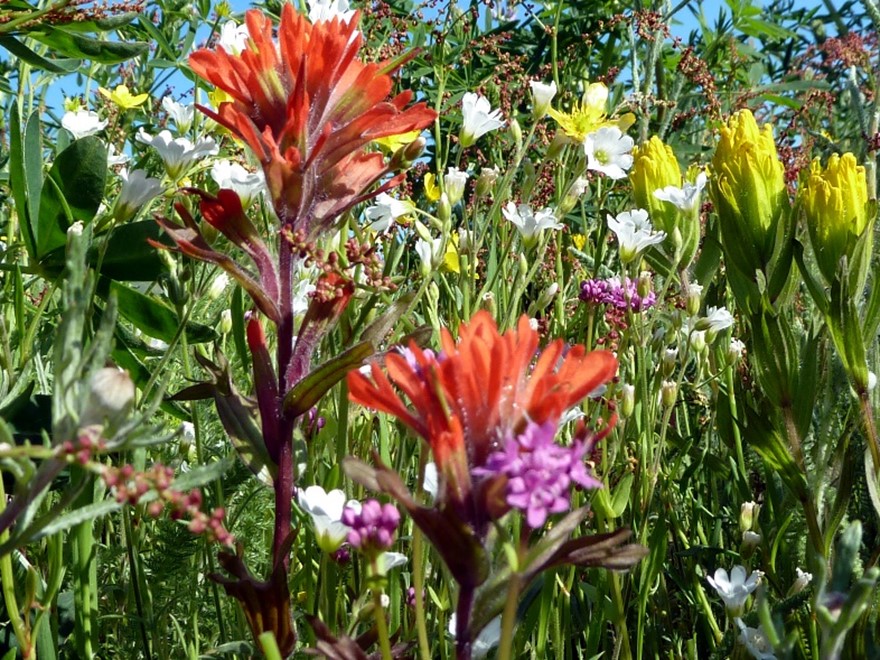
Jan 2, 2024 | Creation's Corner
This Creation’s Corner is a bit longer than previous ones. It is important. Bear with me….
What an awesome opportunity awaits humanity including you and me! Rewilding? What is it, and why is it necessary? Rewilding is defined by Webster as “an effort to increase biodiversity and restore the natural processes of an ecosystem that typically involves reducing or ceasing human activity and often the planned reintroduction of a plant or animal species and especially a keystone species.”
But why is rewilding necessary? For the readers of Creation’s Corner, stewardship has been central to our thinking. As stewards, we see our efforts as joy-filled ministry to participate with our Lord in maintaining Creation’s fruitfulness. Rewilding’s goal is to allow Creation and its myriad species to live fruitfully and abundantly. If accomplished, the Endangered Species Act would no longer be necessary. Species would cease being threatened by human activity. But we have a long way to go! Currently over 1700 species in the U.S. are listed as endangered or threatened.
When I was born, the world population was approximately 2.3 billion. Today it is over 8 billion. As previously discussed, this has resulted in the triad of extinction (Creation’s Corner #18). However, the rate of global human population growth is slowing with much of the developed world now experiencing declining populations, including China, Europe, Russia, and Japan. Without the current immigration, the U.S. population would be in significant decline. The unfolding 6th global extinction episode is upon us. It is time to act!
Rewilding is at two levels – the first is restoring natural processes at the ecosystem level; the second involves restoring individual plant and animal populations. Let’s consider ecosystem level work first. In Creation’s Corner #13, I briefly mentioned the United Nation’s 2022 COP 15 agreement to protect 30% of the world surface by 2030. Currently, 13% of our U.S. land area is protected (national and state parks, wildlife refuges, wilderness areas, etc.) To protect 30%, additional lands totaling twice the size of Texas will need protection. Is it possible? Absolutely. Will we be successful? That will depend on us. Think globally and act locally. “We” have an abundance of land. In addition to the current protected areas, our National Forests represent 8.5% of U.S. land area while the Bureau of Land Management Land is approximately 10% of our land. That does not include State-owned forests etc. Shifting some of these areas to ecosystem preservation rather than multiple use will need to occur. A large amount of land is also owned privately. Here, the work of land trusts such as Whidbey-Camano Land Trust (https://www.wclt.org) will be crucial. WCLT has already protected more than 9000 acres of our county land. Some of this is to maintain its use for agriculture, but much of it is protected at the ecosystem level. WCLT depends on people like you who financially support their work and/or have conservation easements placed on their land.
Rewilding at the species level has been on-going for years. The California Condor, which was extinct in the wild, has now been successfully released and is again reproducing in the wild. In other cases, rewilding has involved re-introductions into areas where the species is locally extinct but within the historic range. The highly successful introduction of Golden Paintbrush at Pacific Rim Institute is an excellent example. More than 40,000 of these beautiful plants are now blooming in PRI’s restored prairie – the second largest population of this species in the world!
But other proposed reintroductions are receiving significant push-back. Restoring a beautiful native plant or a cute chipmunk is one thing, but a major predator is another. Currently, U.S. Fish and Wildlife is plans to release grizzly bears into the North Cascades (https://www.fws.gov/project/north-cascades-grizzly-bear-restoration-eis). Public input is now requested. The plan is to release up to 25 bears over the next few years with the hope that natural reproduction increases the population to approximately 200 individuals – the number considered a minimum viable population. Significant meetings, mostly east of the Cascades, opposing the re-introduction have taken place. Not in my state is the mantra! The species once was fruitful throughout the mountains of the west. It is now all-but gone. Let your voice be heard. Who will speak for the bears? Similar discussions are taking place in the state of Colorado where gray wolf reintroduction plans are to be completed by Dec. 2023 with up to 10 wolves being released by the end of 2023. The last gray wolf in Colorado was shot in the1940s. In June 2021, a female thought to have come from Wyoming gave birth to six pups. It is the beginning!
What are your thoughts regarding rewilding? How can you personally be part? Could you financially support Whidbey Camano Land Trust? Can you write to your government representatives, encouraging them to act on behalf of Creation? Could you plant a butterfly garden or establish native plants to support the local animal population? According to Isaiah 55:12, when we seek the Lord and follow His ways “You shall go out in joy and be led forth in peace; the mountains and the hills will burst into song before you, and all the trees of the field will clap their hands.” Blessed to be a blessing. Creation waits….
— Joe Sheldon
Thanks for listening. Direct comments to[email protected]
If you would like to receive additional information on Creation care, notices of special events, Creation walks I lead, etc. don’t hesitate to contact me at the above address and I will add you to my e-mail list. Your comments are welcome.
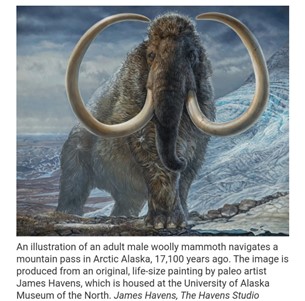
Dec 19, 2023 | Creation's Corner
Sometimes, it seems like science fiction becomes reality. That appears to be close at hand with de-extinction. The previous edition of Creation’s Corner considered the triad of extinction. De-extinction aims to bring species back to life that no longer exist. How in the world (and I really mean that) could an extinct species be brought back to life. Can it be done, and should it be done? When is the line crossed when we cease caring for creation and begin to “play the part of God”?
Bringing species back from extinction has long been discussed as a dream. A possibility? We must remember that nearly all the thousands of species lost in the last few hundred years have been directly or indirectly due to humanity. Without us, most would continue their fruitful existence. How, then, would the process of de-extinction move ahead one species at a time? Candidate species currently include species where DNA extraction from their remains (sometimes fossils) is possible. Tyrannosaurus is not a possibility (at least at present). A short list that is being discussed includes the wooly mammoth, passenger pigeon, Thylacine (Tasmanian tiger), and the gastric-brooding frog.
Let’s begin our discussion with the mammoth. Several frozen intact specimens have been found in the Arctic ice in Siberia and North America — some with grass still in their mouths, blood in their veins, and edible pink flesh. These specimens are more than 20,000 years old! A complete genome was sequenced in 2015. A simple outline of the anticipated steps to bring a mammoth back to life include inserting the mammoth DNA into the nucleus of the egg of an African elephant and implanting the egg into the elephant’s uterus. If the pregnancy of 22 months is successful, a mammoth would be born. How soon will this be done? In a 2021 interview with USA Today, Ben Lamm, CEO of Colossal Laboratories and Biosciences stated “…we still expect our first mammoth calves by 2028”.
|
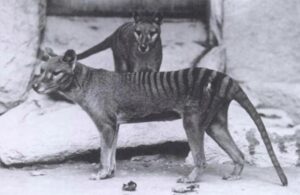 Colossal is also working on a project to bring back the Tasmanian tiger, the genome of which has also been sequenced. The Tasmanian tiger population prior to European settlement of the island is estimated to have been about 5000 individuals. The last known member of the species died in 1936. Colossal is also working on a project to bring back the Tasmanian tiger, the genome of which has also been sequenced. The Tasmanian tiger population prior to European settlement of the island is estimated to have been about 5000 individuals. The last known member of the species died in 1936.
Will it be possible to bring some species back from extinction? I expect some reading this post will witness de-extinction in their lifetime. Imagine living with a woolly mammoth! However, will it be possible for the restored species to again become fruitful populations within Creation? For that to occur, it must have at least a minimum viable population. For vertebrates, that number is in the hundreds.
Another problem is that species brought back from extinction – our woolly mammoth – would carry a single genome. There would be no genetic variability for adaptation to changing environmental conditions. A huge gap exists between a single individual brought back from extinction and a minimum viable population. The steward’s primary task today should be to protect and nurture Creation’s living species. Entering the daunting process of de-extinction will be a considerable challenge.
— Joe Sheldon
Thanks for listening. Direct comments to [email protected]
If you would like to receive additional information on Creation care, notices of special events, Creation walks I lead, etc. don’t hesitate to contact me at the above address and I will add you to my e-mail list. Your comments are welcome.
|
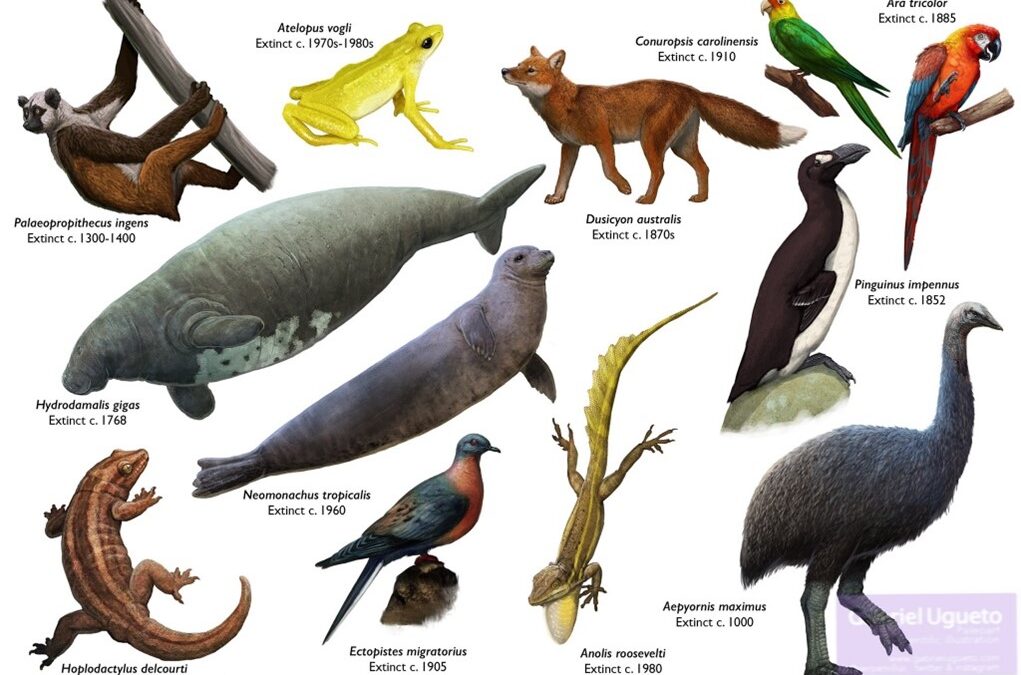
Dec 5, 2023 | Creation's Corner
A previous issue of Creation’s Corner addressed the recent loss of much of Creation’s megafauna at the end of the last ice age. What has happened to the mastodon, mammoth, dire wolf, short-faced bear, and hundreds of other large species of mammals that occupied Earth (outside of Africa)? The simple answer is they are extinct. The apparent causes are climate change, human hunting, and other factors associated with the increasing human population. For those of us who love the Creator and are thus called to be Kingdom People in God’s unfolding Kingdom, the loss of Creation’s fruitfulness cuts deep into the soul.
This is difficult and painful for me to write, and I expect it is also difficult for you to read. But if we take seriously our life in God’s Kingdom today, we must face both the joyous and the difficult tasks of Kingdom people. Ignoring the pain of Creation is not an option. It will not go away. Even when the task seems overwhelming, there are ways that each of us can do our part.
I am a conservation biologist, and for my tribe, the concept of extinction is more complicated than it might seem. It is not just those species that no longer exist. Two other categories of extinction must be considered. Indeed, the extinction triad is inseparable as we think about God’s fruitfulness principle – that all God’s species were given the blessing to be fruitful and to multiply (Genesis chapter one).
EXTINCTION — AS COMMONLY UNDERSTOOD: These species no longer exist as living forms, The list of extinct species goes back to the earliest traces of life on Earth. However, our primary focus in Creation’s Corner will be the much more recent loss of species during the last few hundred years. Nearly all these recorded extinctions, that number in the thousands, are attributed to humans. Considering only the vertebrate species, since the 16th century more than 680 have been lost. What are the primary causes of these extinctions? Habitat loss, hunting\overharvesting, human caused disease spread, human introduction of nonnative species, and climate change.
EXTINCTION IN THE WILD: Another species group includes those that no longer live in the wild but are maintained in zoos, animal parks, botanical arboreta, etc. It is hoped that the captive populations of many of these species will increase, eventually allowing their re-introduction into the wild once the threats have been reduced/removed. A good example is the California Condor. The last wild bird was captured in 1987 and joined a captive breeding flock. Release back into the wild occurred about 15 years later and continues. The wild population now numbers over 500. See the following link for a current example – Hawaiian honeycreepers. Only five individuals are left in the wild! https://www.cnn.com/2023/11/02/world/hawaii-akikiki-honeycreeper-extinction-c2e-spc-scn-intl/index.html. This species does not do well in captivity which closes the door to captive breeding for subsequent release.
ECOLOGICALLY EXTINCT: Species in this category continue to exist in the wild but have populations so small that they are no longer significant players in the local ecosystem. Typically, their historic range has been reduced to one or a few isolated populations that threatens their gene flow and genetic diversity. Unfortunately, the number of species in this category is large and increasing. Audubon Society considers two-thirds of the North American bird species to be at increasing risk due to climate change and other factors. European insect populations have declined by 70 to 80% in recent decades. Ecologically extinct species (missing from most of their historic range) would include the Woodland Caribou, Grizzly Bear, Gray Wolf, American Bison, California Condor, Spotted Owl, Marbled Murrelet, etc. And I am only mentioning a few vertebrate species.
Faced with the magnitude of the problem, one is tempted to simply ignore it. Pain hurts. Out of sight, out of mind. But that is not an option for Kingdom People. There are things that we can do to slow climate change. We can also participate directly or indirectly in habitat preservation. Consider our own Whidbey-Camano Land Trust that has permanently protected more than 9,000 acres on Whidbey and Camano Islands! Check out their work to protect our island home! How can you be involved locally and beyond?
— Joe Sheldon
Thanks for listening. Direct comments to [email protected]
If you would like to receive additional information on Creation care, notices of special events, Creation walks I lead, etc. don’t hesitate to contact me at the above address and I will add you to my e-mail list.
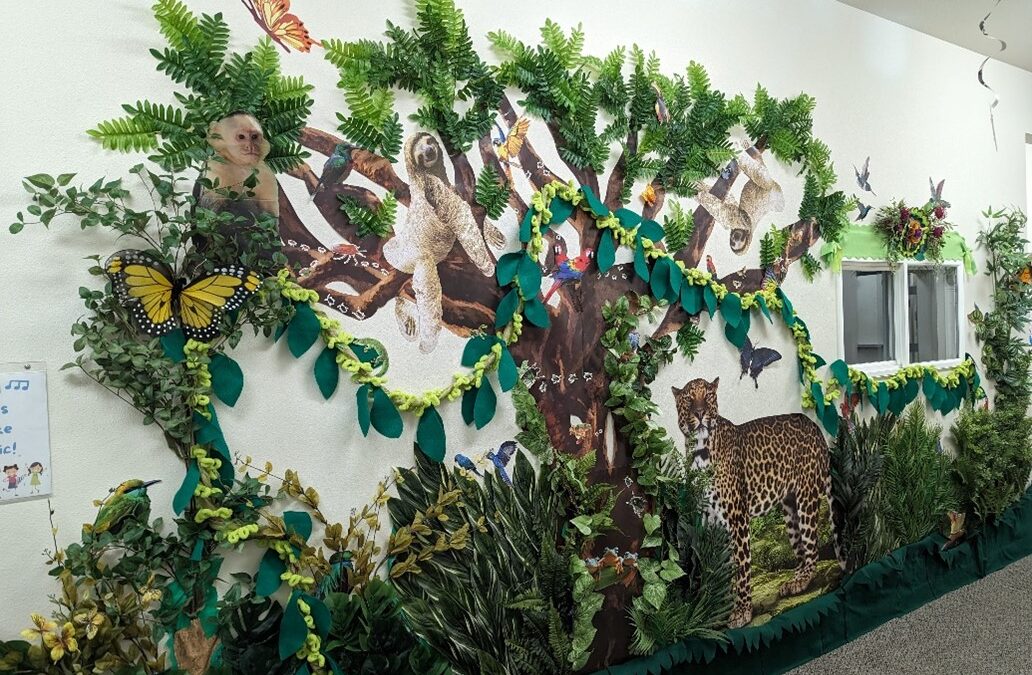
Nov 21, 2023 | Creation's Corner
THE WALLS TELL THE STORY!
Have you recently walked the hallway in the youth wing of Trinity Lutheran? If not, you should take a stroll into a different world! The walls of the hallway have been transformed into a jungle scene created by Marcie Bovetz for the Vacation Bible School this past summer. Some of you were part of that grand adventure. The theme for this past summer’s VBS was “jungle”. Can you imagine seeing these creatures and the lush tropical foliage through the eyes of a child? What wonders and thoughts come to mind? What a grand opportunity to introduce Creation care into the minds of these future leaders!
|
As you personally walk down the hallway, what thoughts come to your mind? What does it mean to you that we are to feed, heal, forgive, pray, and rest? What do these words have to do with our relationship with Christ and with Creation? If we instruct our youngest that these qualities are essential for the Christian life, how do you personally incorporate them into your life?
Is there a central core teaching about the life of a Christ follower in the Bible? Let me suggest the Sermon on the Mount (Matthew 5-7) encapsulates the message of the Gospel – and Creation is part of the story! Here Christ tells us to look at the birds of the air (Matthew 6:26) and in vs 28 to consider the lilies of the field. The Greek verb for “look” in vs. 26 suggests we should look carefully — to study and appreciate. So many of us take Creation for granted when Christ has laid out a banquet table for us to enjoy. If we instill the awe and wonder of Creation as well as a responsibility for Creation Care in our youth, do you find that adults continue embrace that message?
The next three “Corners” will consider three related themes. Here we enjoyed a jungle scene where the highest diversity of Creation’s species live. Indeed, half the world’s plant and animal species live in the rain forest that occupies 3.6 percent of Earth’s surface. The topics for the next three “corners” will be Extinction, De-extinction, and Re-wilding. We are quick to celebrate the goodness, fruitfulness, and beauty of Creation. But let us not forget that currently an estimated one quarter of all species are threatened by human driven extinction. What should be the response of a Christ-follower? Tune in as we explore this topic next.
Thanks for listening.
— Joe Sheldon
Direct comments to Joe Sheldon at [email protected]
If you would like to receive additional information on Creation care, notices of special events, Creation walks I lead, etc. please contact me at the above address and I will add you to my e-mail list.
|










